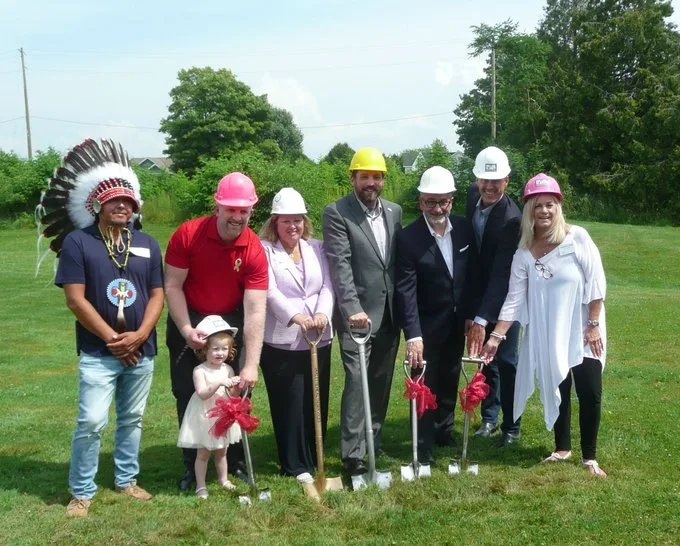TYENDINAGA MOHAWK TERRITORY — Construction is underway on a new Elder care home to be operated by the Mohawks of the Bay of Quinte in Tyendinaga Mohawk Territory, a First Nation community on the shore of the Bay of Quinte. This is part of the Ontario government’s $6.4 billion commitment to build more than 30,000 new beds by 2028 and 28,000 upgraded long-term care beds across the province.
“Congratulations to the Mohawks of the Bay of Quinte on their ground-breaking for a new long-term care home. Our government is committed to our shared journey of healing and reconciliation with the Indigenous people of Ontario,” said Paul Calandra, Minister of Long-Term Care. “We are also fixing long-term care and a key part of that plan is building modern, safe and comfortable homes for our seniors. Today’s ground-breaking represents a significant milestone for both priorities. When the home is completed, 128 First Nation residents will have a new place to call home near their family and friends that is tailored to the needs of their community.”
The new state-of-the-art 128-bed home being developed in Tyendinaga Mohawk Territory is expected to welcome residents in winter 2026. The not-for-profit home will provide 128 new long-term care beds and culturally appropriate services for the Indigenous community. The home will provide private, modern rooms, 24-hour nursing and personal care, social activities and food services, and help maintain connections with language, culture, and community.
Once built, the home will also feature design improvements including larger resident common areas and air conditioning throughout the home. The design is centred around ‘resident home areas’ to create more intimate and familiar living spaces for up to 32 residents, with dining and activity areas, lounges and bedrooms. The new home will be licensed to and operated by the Mohawks of the Bay of Quinte, represented by Tyendinaga Mohawk Council.
The government is fixing long-term care to ensure Ontario’s seniors get the quality of care and quality of life they need and deserve, both now and in the future. The plan is built on four pillars: staffing and care; quality and enforcement; building modern, safe and comfortable homes; and connecting seniors with faster, more convenient access to the services they need.









